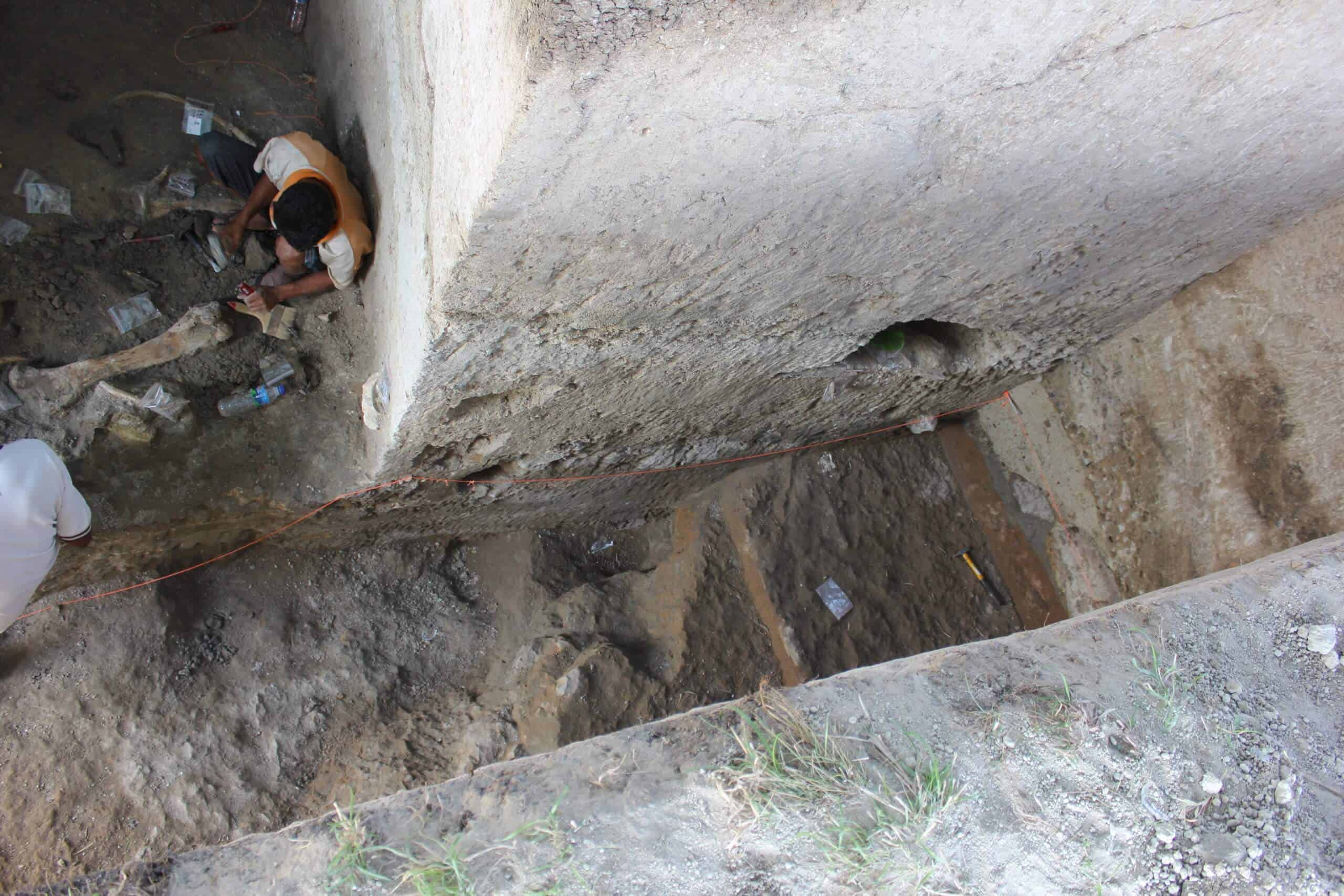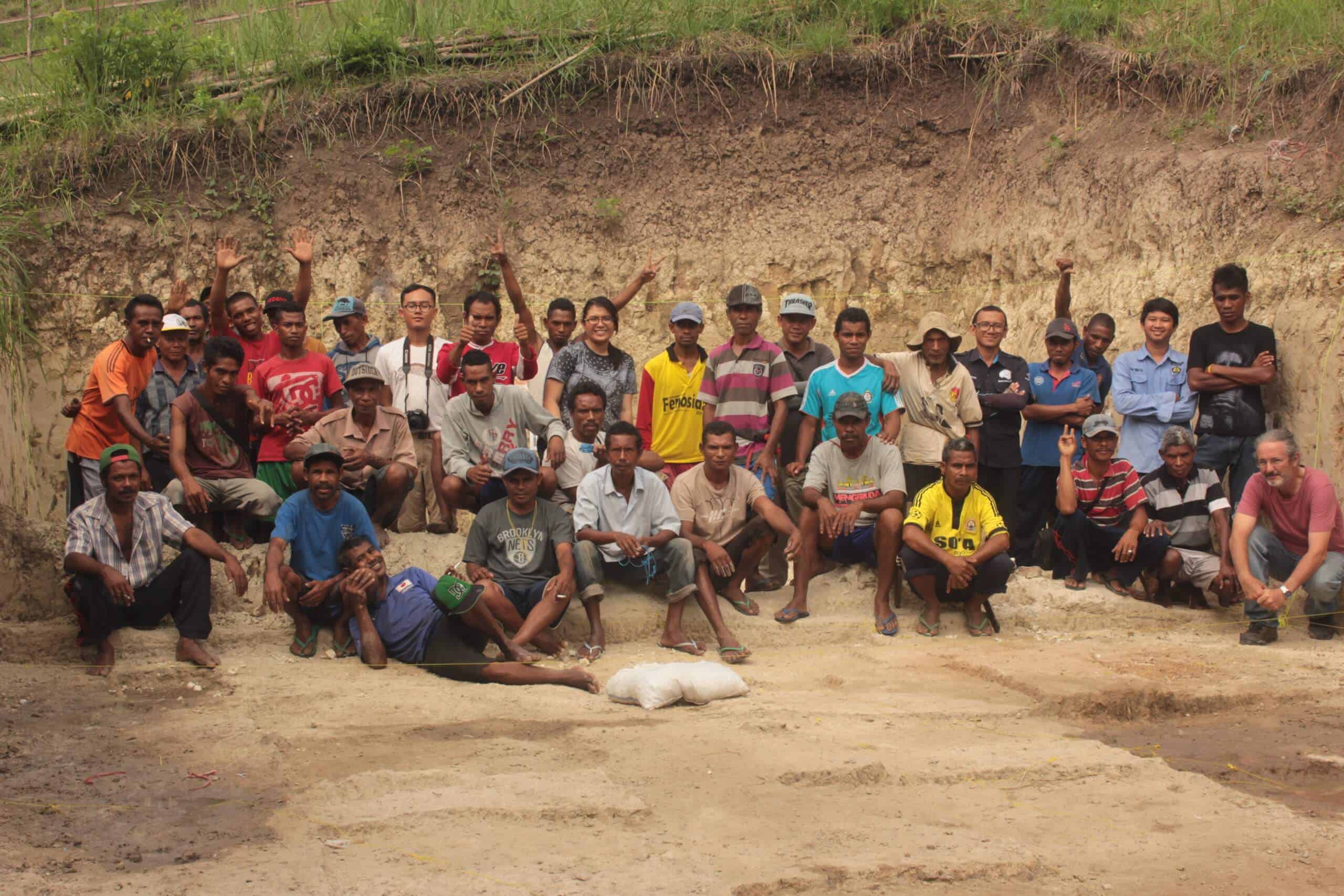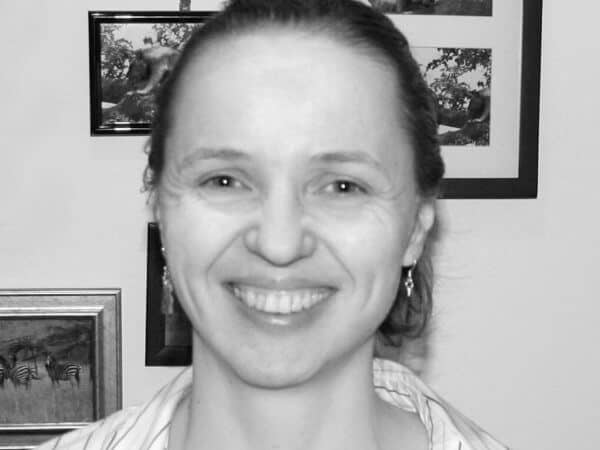Great discoveries, palaeontology and religion, we talk about it all in this second part of our interview with Dr Gerrit van den Bergh.
Continuing our interview with Dr. Gerrit van den Bergh, in this second part of the interview with him he has shared his enormous knowledge about how plant and animal life evolved, the relevance of palaeontology to us, the global fluctuations in the climate, why he doesn’t recommend buying a house on the coast, his discoveries, the relevance of religious scriptures and much more.
Extinct or Not Extinct?
Is it true that more than 99 percent of plant and animal life that existed on our planet is now extinct?
I don’t know the exact figure, but it is definitely true that the vast majority of animals and plants that once existed are not with us anymore.
At least when you consider species numbers. A species is defined as an organism, or more precisely, a population of individuals, for which two individuals (female, male) can produce fertile offspring.
But species are not static and tend to gradually evolve into other species while adapting to ever-changing environmental conditions, or don’t adapt and become extinct.
We inherited the concept of species from a period when people thought a species was a fixed entity, created by an invisible supernatural power, but now we know that the DNA that forms the basic building blocks of a species is prone to changes, called mutations, and over many thousands and millions of years the modified DNA after many generations can result in a different outcome, or species.
The original classification system to define species has become blurred with our insights in genetics and DNA, because where do you place the boundary between two species?
Like in the example I gave above, it follows from fossil DNA that different species of hominins (‘hominins’ are all ‘species’ that are closer related to chimpanzees, our closest relative with whom we share 99% of the same DNA, than to other great apes such as gorillas) interbred with each other on several occasions, and had fertile offspring, which we know because the DNA of modern people have pieces of DNA that are to a variable degree identical to DNA extracted from Neanderthal or Denisovan fossils.
These hominin species kind of ‘breached’ our artificial classification system and committed what we call ‘hybridisation’. The point that I try to make here is: do we consider Neanderthals and Denisovans as extinct, or do they live on in our DNA?
If you consider it that way, that we are part of a lineage, and our lineage, which has progressed through thousands of different ‘species’ that are now extinct, all the way back to the first fish that crawled on land and beyond, is not extinct.
Just to give you another example: dinosaurs. Dinosaurs are not extinct, dinosaur lineages are all around us, namely birds.
Today’s Issues
How is palaeontology relevant to us today?
So if you want to give an ‘economic’ value to palaeontology, I would say that the discipline is definitely important for assessing what the future may bring for humanity.
I think I already answered that question above by mentioning the importance of fossils of tiny plankton organisms in reconstructing climate change. Just another example are the study of fossil pollen that help us reconstruct changes in vegetation over time.
Or fossil shells, or teeth of elephants. One of my PhD students from Indonesia analysed the chemical composition of fossil teeth of extinct elephants and was able to reconstruct if they were grazers (grass eaters) or browsers (leaf eaters).
This in turn provided indirect evidence that the climate gradually became dryer in large parts of Indonesia over the last two million years, because the different elephant species were depending increasingly on grasses and savannah-like conditions.
So if you want to give an ‘economic’ value to palaeontology, I would say that the discipline is definitely important for assessing what the future may bring for humanity.
Geologists often apply the principle “the present is the key to the past” when they look to modern environments and their deposits trying to make sense of ancient rock formations. But it also works the other way around: the past is the key to the future.
Just 100 years ago people had not the faintest idea of what kind of forces nature is able to throw at us.
Many of these forces work very slowly and are hard to notice within a human life time. Take for instance sea-level changes induced by variable amounts of water stored as ice on the poles, again due to global climatic fluctuations.
We now know what to expect in the near future within reasonable limits, and I would not recommend buying a house on the coast.
Making Efforts
What have your efforts in this area led you to?
Joy and pleasure, visiting remote places and meeting interesting people from different cultures all over the world.
What have been the most interesting discoveries in palaeontology?
There are many, many interesting discoveries, and the most important findings will be different depending on who you ask.
There are many, many interesting discoveries, and the most important findings will be different depending on who you ask. Personally, the discovery of Homo floresiensis, the tiny 1-metre tall hominins that once inhabited the Indonesia island of Flores until about 50,000 years ago, counts as one of the most important discoveries of this century, because I was, and continue to be, directly involved in the research.

There are still many questions unanswered regarding these tiny people, for example, how did they adapt to living on a relatively small island, did they hunt and eat tiny elephants that also evolved in isolation on the island, and why did they disappear? Was it volcanism or modern humans arriving that led to their demise?
Trying to answer such questions will keep me busy for a while. Unfortunately, the pandemic has prevented me from going to the field on Flores over the past year.
Palaeontology And Religion
Does palaeontology prove or disprove the ancient and religious scriptures?
Archaeology nowadays is still frequently used for nationalistic or political purposes, for example to claim certain territory based on cultural remains.
Palaeontology and religious scriptures are two incomparable things, certainly if one takes the stories from scriptures literally, and not as written histories from long ago that served certain purposes in their time (political, territorial, or just trying to provide our conscious minds with an explanation of observed phenomena, a form of early ‘science’ you could say without the vast amount of evidence that we have to our disposition at present).
Archaeology has certainly been used to question or confirm religious texts. Actually, Biblical stories were a major incentive that led to archaeology as a research discipline in the first place. In the mid-19th century many amateurs, adventurers and diplomats started digging mostly haphazardly in the Middle East, inspired by Biblical stories.
Others were more interested in treasure hunting, and it would take quite some time until Archaeology had become the professional discipline that it is now.
Archaeology nowadays is still frequently used for nationalistic or political purposes, for example to claim certain territory based on cultural remains.
Or the other way around, cultural artefacts may be deliberately destroyed by certain groups to erase any traces of other ethnic groups that inhabited a disputed area, for example the destruction of Palmyra in Syria.
A Good Career Choice?
Is there a good career in palaeontology, archeology and geology for the young of today?
I read somewhere that archaeology is a profession that can’t be automated or carried out by robots, so careers in archaeology should be available for the coming decades at least.
In Australia, many trained archaeologists work in consultancy companies that provide mandatory cultural heritage assessments that have to be completed before any infrastructural work can take place. So certainly yes, if you are serious enough to make the best of it you can.
As a geologist or archaeologist you should think about also being very flexible in choosing later employment outside your formal training, because these disciplines provide you with widely applicable skills, such as critical thinking, analysing complex systems, and a flexible mindset open to a wide range of other disciplines.
Just imagine, an archaeologist needs to know a little bit about practically all other disciplines in the humanities and natural sciences in order to make a justified interpretation of artefacts and their contexts and extract the maximum amount of information out of these: anthropology, anatomy, chemistry, biochemistry, psychology, geology, history, art, potentially anything really.
In reality it comes down to knowing where to find the right expert to ask for help with certain aspects of your research.
The times that one person could cover the entire known field of science and the arts, as exemplified by Leonardo da Vinci, are long gone.
There is just too much information and any student will have to choose a sub-discipline or specialisation to remain on top of new developments.
Dr. Gerrit D. van den Bergh is senior lecturer at the University of Wollongong, Australia in the Centre for Archaeological Science, School of Earth, Atmospheric and Life Sciences.
Photos: Dr. Gerrit van den Bergh
Want to read part one? Here it is:
Support us!
All your donations will be used to pay the magazine’s journalists and to support the ongoing costs of maintaining the site.
Share this post
Interested in co-operating with us?
We are open to co-operation from writers and businesses alike. You can reach us on our email at [email protected]/[email protected] and we will get back to you as quick as we can.










